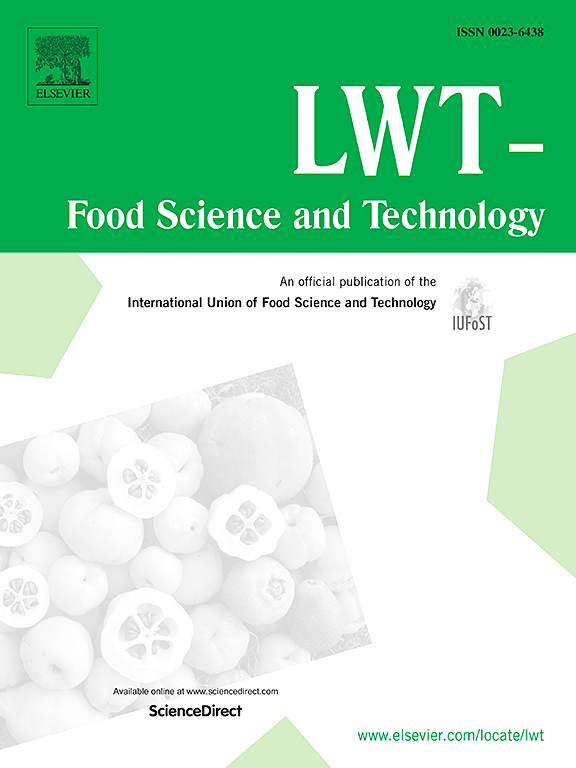Simulating fatty acid autoxidation and exploring the related volatiles formation mechanism
IF 6
1区 农林科学
Q1 FOOD SCIENCE & TECHNOLOGY
引用次数: 0
Abstract
Lipid autoxidation is one of the main pathways for the formation of volatiles in meat. Investigations into how the unsaturated fatty acid (UFA) chains in lipids are autoxidized into volatiles are of great importance and could facilitate aroma research. In this study, taking UFAs as the research model, understanding of the formation of volatiles from the UFAs’ autoxidation has been updated and new pathways for furaldehyde derivatives have been proposed. The types of volatile produced were determined by the position and the number of C=C bonds as well as the methylene group flanked by the C=C bond. When the number of carbon atoms adjacent to C=C increases, the carbon lengths of aliphatic aldehydes elongate. Additionally, the number of methylene groups flanked by the C=C bond in PUFAs determine the types of aldehydes, alkanals, alkenals or alkadienals, as well as ketones. Apart from the alkyl furans, also furaldehydes and other derivatives could be produced from the oxidation of n-3 and n-6 fatty acids with over two C=C bonds, instead of from the Maillard reaction. This study presents the direct proof of the correlation between fatty acids and volatiles, and could also provide the theoretical basis for elevating aroma through lipid regulation.
求助全文
约1分钟内获得全文
求助全文
来源期刊

LWT - Food Science and Technology
工程技术-食品科技
CiteScore
11.80
自引率
6.70%
发文量
1724
审稿时长
65 days
期刊介绍:
LWT - Food Science and Technology is an international journal that publishes innovative papers in the fields of food chemistry, biochemistry, microbiology, technology and nutrition. The work described should be innovative either in the approach or in the methods used. The significance of the results either for the science community or for the food industry must also be specified. Contributions written in English are welcomed in the form of review articles, short reviews, research papers, and research notes. Papers featuring animal trials and cell cultures are outside the scope of the journal and will not be considered for publication.
 求助内容:
求助内容: 应助结果提醒方式:
应助结果提醒方式:


